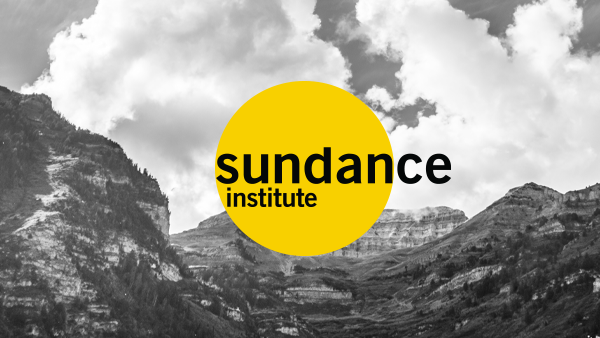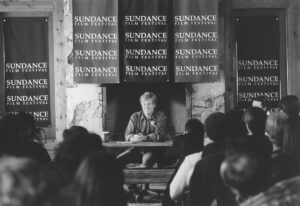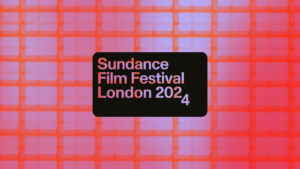Patrick Creadon
On April 8, three documentary filmmakers and I traveled to Oxford, England to serve as media advisors for the Sundance Institute Stories of Change initiative at the Skoll World Forum. The SWF, which is the biggest and most important gathering of social entrepreneurs in the world, was celebrating its tenth anniversary, and the entire weeklong convening was magical. Think breakfast with Kofi Anan. Think dinner at Harry Potter’s dining hall. Think late night karaoke singing that great old Annie Lennox song… with Annie Lennox. It was that kind of week.
In many ways it was one of the most inspirational experiences of my life. It also shined a light on some of the challenges doc filmmakers are dealing with today. I hope some fellow filmmakers and storytellers can learn a thing or two from our experiences in Oxford.

Spending a week in a university town got me thinking about my own days in college. I attended the University of Notre Dame in the late 1980’s, and though I never wore a loincloth or sandals, my roommates used to call me “Gandhi”. They teased me because I spent an inordinate amount of time helping people less fortunate than myself and trying to find creative ways to make their lives better. “Save the world, Creads” was a good-hearted running joke my senior year.
I did a lot of volunteer work, studied international relations, and spent most of my electives studying psychology and moral development. About the only thing I wasn’t studying in school was filmmaking. I loved films and had considered majoring in film and television production, but it felt like a comparatively lightweight pursuit at the time, so I decided against it. Making movies could be incredibly challenging and rewarding, I imagined, but what I really wanted to do was make the world a better place (cue the violin music here).
Totally corny. Totally true.
Twenty-five years later I found myself roaming Oxford amongst some of the leading positive social change makers the world has ever known. This actually is the crowd that is making the world a better place. Speaking with people like Muhammad Yunus and Bunker Roy, working with groups as diverse as Arzu, Healthcare Without Harm, Good Weave, Fair Trade USA, Landesa, and INJAZ al-Arab, and knowing without doubt that my own skills as a filmmaker and storyteller were a tremendous addition to the convening, was thrilling.

As I spoke with more and more of these social entrepreneurs, it struck me that regardless of what particular area of interest they are working in (women’s rights, clean water for all, sustainable fishing, fair trade models, land rights, economic opportunity for Arab youth, climate change, alternative energy, cleaner and healthier health care systems, to name a few), every single one of them shares the same set of challenges: they are (a) trying desperately to figure out what exactly what their own “story” is, (b) trying to figure out the most creative and engaging ways to tell that story, and (c) looking to find the right storytelling partner to help them get their message to a wider audience. Oh, and did I mention, money is always tight? There’s never enough to go around when tackling the most pressing issues of our time.
Just as today’s social entrepreneurs try to achieve their organization’s goals by using new tools and insights (micro-financing, social media, crowd-sourcing, new financial partners such as Skoll, and the ever-increasing awareness that we live in a global community, among others), today’s storytellers also have a brand new tool kit to help them tell stories more efficiently, creatively, and effectively. These include Zoom mics (portable, hi-quality microphone/recording devices), iPhone and other consumer-grade-yet-HD-quality video, Skype, crowd-sourcing of video storytelling, affordable footage and music libraries, lo-cost editing software, laptop production studios, YouTube, Twitter, Facebook, Flickr, et cetera. This brand new high-powered, lo-cost arsenal of storytelling tools and techniques have blown open the doors of who can make what, how cheaply it can be produced, and remarkably (!) which distribution channel they can employ to get their story out into the universe.
And beyond the goal of good storytelling, there is a new goal that is every bit as important as the message itself: impact. How will the stories we tell change people’s behaviors, transform the policies that create much of the dysfunction in the world today, and affect the laws that govern us. How will our stories… change the world?
Storytellers/filmmakers like myself are starting to take a very long look at our traditional models (feature-length film, television length documentary, television series) and waking up to the enormous potential in 21st century non-fiction storytelling. The Inconvenient Truth model, which is only seven years old, now feels almost old-fashioned. Most social entrepreneurs and their filmmaking partners would do anything to capture that kind of lightning in a bottle again — Davis Guggenheim’s beautiful and innovative film set the mark incredibly high for stories that want to make change. But what so many of us are realizing is that the feature-length documentary, though very powerful and inspiring, is probably not the right fit for many of the stories that need to be told and shared today.
Consider this: a typical feature-length film takes 2-3 years to make, anywhere from $300,000 to $3,000,000 to finance, another $100,000 to $5,000,000 to advertise and release, and — heart-breakingly! — has fewer and fewer theatrical screens to play on. And though the alternative venue space is growing (festivals, alternative theatrical venues, community screenings, and the educational market), those outlets are also becoming harder and harder to secure once your film is complete. I’d never discourage any filmmaker from making a feature-length film and aspiring to play it in as many theaters as possible (we’ve had two very successful theatrical runs with our previous films Wordplay and I.O.U.S.A. and know how effective that traditional release model can be), but I can say without doubt that aiming primarily for a robust theatrical release is likely a big mistake. More movies and fewer screens is a wicked combination.
Yes, Netflix and other online outlets have made more films available to more people, and that’s been a tremendous breakthrough. But I for one have found that I’m becoming less and less excited about watching great movies on 17″ laptop monitors. We need to keep searching for ways to bring people together to see these stories and engage in lively conversation afterward
So what to make of all this? A few things, I reckon.
First, if a filmmaker has found a social change story and has the desire and the support to make a feature length documentary film, by all means go for it. I wish you good luck (because you’re going to need it — despite all the technological advances, these films are very difficult to make). But be aware that if a big, traditional theatrical release — or even a major festival premiere — is your ultimate goal, those are becoming increasingly harder to achieve. The alternative distribution models — the enormous educational screening world, community cinema events (like the program ITVS and Independent Lens run so brilliantly), Rooftop Films, DOC/NYC, STF Stranger Than Fiction (Thom Power’s terrific series), new and emerging festivals like United Film Festival (and many others) — are exciting and effective. And judging by the sellout crowds we see at most of these kinds of screenings, they’re incredibly popular. But we need more of them. Lots more. Even the alt distribution space can’t handle the amount of great work that’s coming down the pipeline, and the demand for these stories is growing year after year.
Second, two-legged chairs don’t work very well. If social change storytelling is what you want to do, and you’ve found the right story to tell, start looking for that third leg to work with. The role of the financier or funding organization cannot be underestimated. And valuable partnerships don’t necessarily just have to be people or organizations who write checks (though those are critical). Figure out exactly what your story is trying to do, and then search far and wide for groups that have similar missions. Just because everyone has a camera and edit gear nowadays does not mean they should all be attempting to make feature-length films (or even short films). The road to telling these kinds of stories can be a very long one. Do not travel it alone.
And lastly — and most importantly — open your minds to different kinds of storytelling. Especially consider short films or animations that get right to the point quickly. The explosion of high-impact, lo-cost, and extremely moving and effective short films is one of the most exciting developments in the stories for social change space. Got six minutes? Check out these three stories:
I love all three of these films. And what’s great about them is that once they’re completed, they can enjoy a world-wide release the same day. You don’t need a distributor for these stories — your audience will do that for you. The effectiveness and impact of these kinds of stories are only limited by a much, much smaller budget requirement and your own storytelling skills.
There has never been a more exciting time to be making non-fiction films. And as our world becomes more complex and faces ever-more daunting and challenges, the stories we tell are as compelling and urgent as ever.
So much so, they just might save the world.
Patrick Creadon is a filmmaker and writer who lives in Los Feliz. His first documentary film “Wordplay”, a profile of New York Times crossword puzzle editor Will Shortz, was a breakout hit at Sundance in 2006 and went on to become the second-highest grossing documentary of that year. His second feature “I.O.U.S.A.”, a non-partisan look at the national debt, also premiered at Sundance and was released in the fall of 2008 in the midst of America’s financial meltdown. Roger Ebert named “I.O.U.S.A.” one of the Top 5 Documentaries of the year. Creadon’s third film “If You Build It”, which spends a year in the life of one of America’s most innovative classrooms, won a Hilton Sustainability Award at the 2013 Sundance Film Festival. It is currently on the festival circuit and will be released in the fall of 2013. Creadon lives and works with his wife Christine O’Malley. They live in Los Feliz, CA, where they are raising their three young children.




